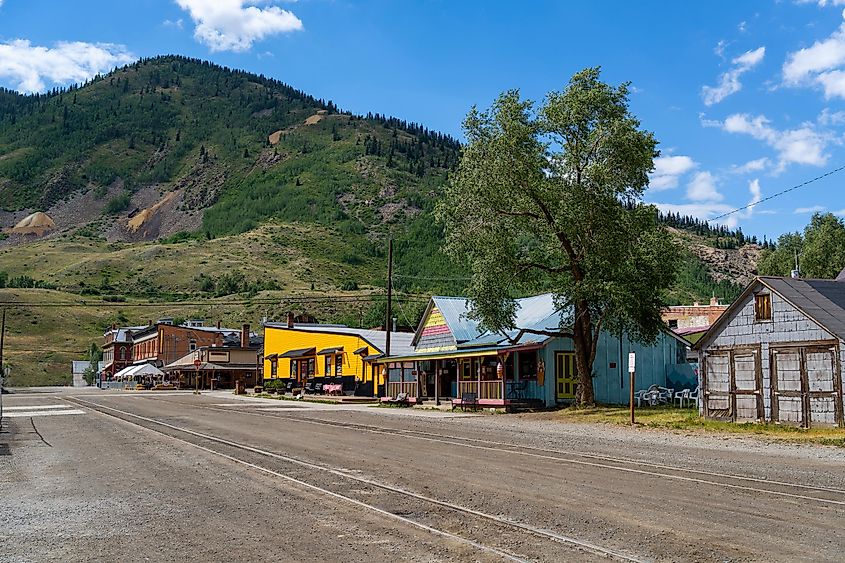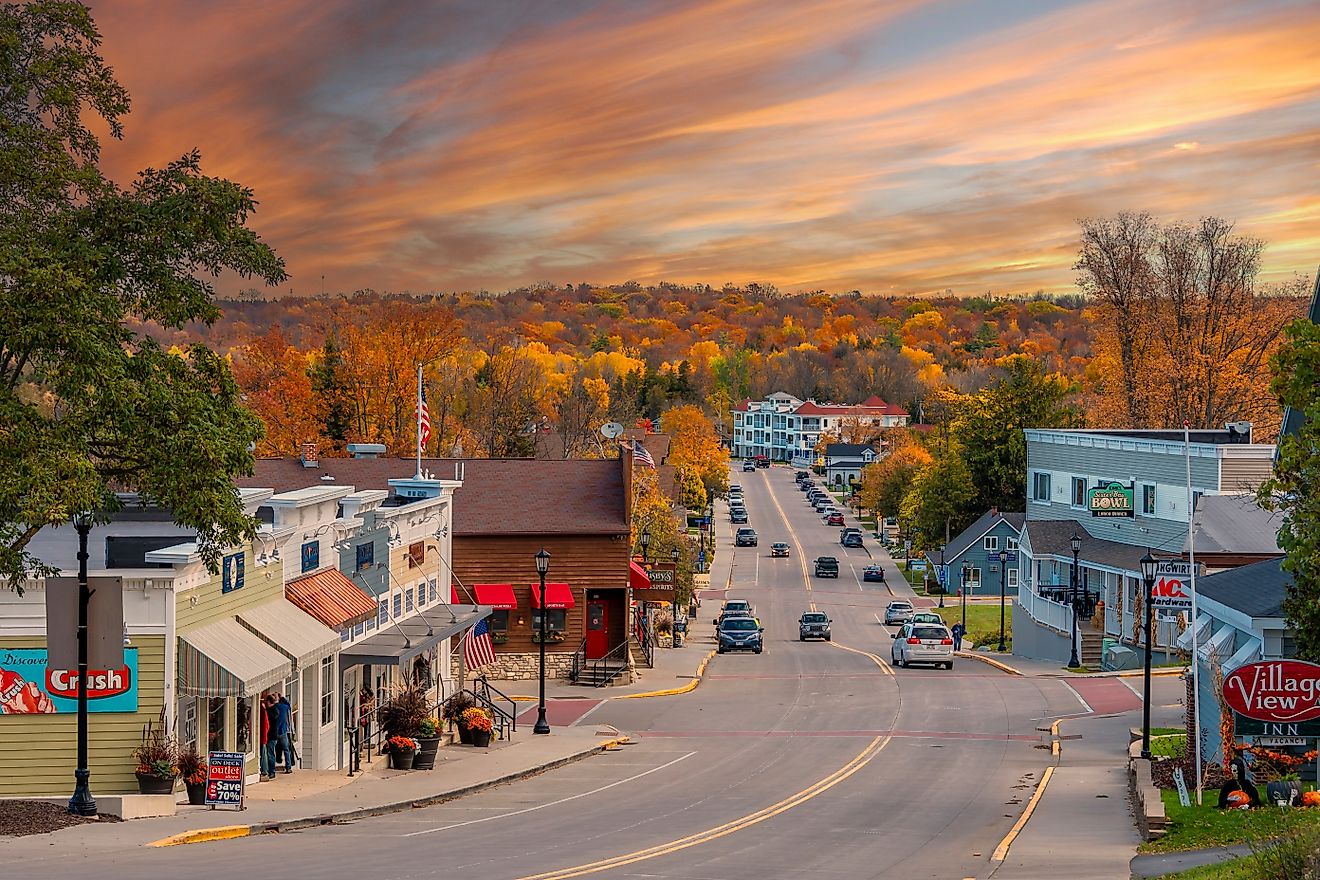
These Historic Towns In Colorado Are Worth Exploring
Colorado is beloved for its mountainscapes, but its history is equally vast and appealing. The Centennial State is full of prehistoric archeological sites dating all the way back to the dinosaurs when the Rockies were just in their infancy. It bears the marks of some early Paleolithic societies and preserves the living cultures of many Native American tribes. Colorado also witnessed mass migrations in the early days of European settlement and provided the fodder for the mining-centric era of prosperity. This state has many stories to tell, and the best way to get caught up is to visit the many historic small towns that lived through these colorful periods and/or provide easy access to the parks, artifacts, and people who did. These seven will be happy to kickstart the adventure.
Leadville

From the moment it was founded in 1877 to 78, Leadville made history. At an altitude of 10,158 feet above sea level, this seat of Lake County is the highest incorporated city in the United States. Leadville also developed quite the reputation (both commendable and nefarious) during the Colorado Silver Boom, from which it sprouted. After one of the world's largest lead-zinc-silver deposits was discovered, "Cloud City" quickly grew to a thriving community of 30,000 people and for a time, was second only to Denver in terms of its riches – as is evident today, thanks to the preserved Victorian hotels, and the three-story, Tabor Opera House, which was deemed a National Treasure by the National Trust for Historic Preservation, and is part of the sizable Leadville Historic District (a National Historic Landmark District). Though the industry went bust in 1893, Leadville's tale did not end there (like so many of its cousins). This scrappy community reinvented itself as one of the premier adventure and endurance race destinations on the continent. The 100-mile mountain run, known as the "Race Across the Sky," is one of the oldest ultramarathons in the world, and after its inception in 1983, jumpstarted what is now a world-famous, year-round event schedule.
Silverton

Silverton is another historic mining town that now fosters adventure tourism. In the 1860s, a group of prospectors found silver and gold deposits along the Animas River within the breathtaking San Juan Mountains. In the following decade, the town plan for Silverton was laid out. When the railroad arrived in 1882, Silverton was in full swing. During its heyday, this seat of San Juan County had 29 saloons (and a red light district) to serve 2,000 residents – an unrivaled and rather licentious ratio. Now that mining operations have ceased, this mountain town has fully embraced its historical and outdoor recreation appeal. All year, visitors can be seen either skiing, hiking, climbing, biking, ATVing, or river rafting in the surrounding public lands. Those keen on a more relaxed exploration of Silverton's past should check out the Mining Heritage Center Museum, take a tour of the Old Hundred Gold Mine, or wander through the Animas Forks Ghost Town.
Durango

Thanks to the 140-year-old Durango & Silverton Narrow Gauge Railroad, just traveling between these two mountain mining towns will put tourists in touch with history (and show them spectacular scenery in the process). This trainline (which is a National Historic Landmark) runs year-round through otherwise inaccessible parts of the San Juan National Forest. Upon arrival, check out the D&SNGRR Museum to see the old steam engine and to learn more about the past century and a half. Next, peruse the rest of Durango's Victorian downtown (the entirety of which is a National Historic District), paying particular attention to the attractions of Main Avenue, most notably, the iconic Stater Hotel – a historic landmark built in 1887, with 88 guest rooms and a Wild West saloon that still serve regular visitors. Finally, Durango is the classic start and finishing point for the 236-mile San Juan Skyway loop. Driving counterclockwise will take motorists back up to Silverton, or heading clockwise will lead to our next stop on this historic Colorado tour.
Cortez

Though only 45 miles West of Durango, Cortez did not prove to have the same mining potential. Instead, it grew as an agricultural and ranching center in the late 19th century. But this merely describes one of the last events in a long tale. Named after Hernán Cortés, this Montezuma County city sits on the Old Spanish National Historic Trail – a trade route between Sante Fe, New Mexico, and Los Angeles, California, that was first traced by Spanish explorers in the late 1500s and utilized until the 1850s. For centuries prior to European settlement, the region around modern-day Cortez was home to the Ancestral Puebloan, Navajo, Apache, and Ute tribes. Delve deep into Native American history by driving the 116-mile Trail of the Ancients, which visits Mesa Verde National Park (a UNESCO World Heritage Site), Crow Canyon Archaeological Center, Canyon of the Ancients National Monument, and Hovenweep National Monument – which are all short day trips surrounding Cortez.
Cripple Creek

Central Colorado's Cripple Creek is a triple threat to history. This centralized, Teller County city once again taps into the Centennial State's mining backbone while also highlighting the longstanding popularity of its neighboring mountain, Pikes Peak, and showcasing millions of years of prehistory at the nearby Florissant Fossil Beds National Monument. Once called the "World's Greatest Gold Camp," Cripple Creek proved to be one of the last great success stories of the mining industry. In the early 20th century, 500 mines (split between Cripple Creek and Victor) extracted the modern-day equivalent of tens of billions of dollars worth of the coveted precious metal. During the same area, tourists had taken notice of the adjacent 14,115-foot, pink granite (often snowcapped) Pikes Peak. So in 1916, the Pikes Peak Highway was completed, giving motorists an accessible and spectacularly scenic route to the top of "America's Mountain."
Creede

As you might suspect, this seat of Mineral County was also a major mining town. Creede is plunked within an extinct volcanic caldera at the headwaters of the Rio Grande, within the San Juan Mountains, so that steep, rocky cliffs beautifully frame its historic downtown. Not only is this place a sight to behold, but because of its geological constrictions, it will forever remain a small town. The Creede Historical Society Museum & Library is located right on Main Street and is housed within a one-story wood-framed train depot built in 1891-92. Next, to add palpable context to the community's storied past, take a guided tour (led by former miners) of the Underground Mining Museum – a 600-foot subterranean tunnel with 22 displays, plus a gift shop and community center.
Central City

Many of Colorado's boom towns boast catchy slogans. In the case of Central City, prior to the rise of Leadville, it was known as the "Richest Square Mile on Earth." Here, just 35 miles West of Denver (and still a world away in terms of the vibe and aesthetic), the gold rush got a jump start – kicking off in 1859. Within two months of the first discoveries, 10,000 people had moved in. Such a high density of energized prospectors/miners naturally led to some of the shenanigans associated with the Wild West. For instance, brawls and knife fights are said to have broken out with some regularity at the historic Teller House Hotel. But it wasn't all savagery, for with wealth came culture – namely the 550-seat Central City Opera (the fifth oldest operating opera company in the US). Unfortunately, a devastating fire in 1874 put a damper on Central City's momentum, but the community has rebuilt and reinvented itself again and again. Nowadays, the gold rush mentality has been reignited in the form of casino culture.
Visitors may flock in droves to the four-season recreation afforded by Colorado's many mountains, but the opportunity to uncover a deep history should not go unheeded. Drill into the Centennial State's 19th-century mining boom, dust off the bones of the earth's prehistoric epochs, and pay homage to the Indigenous cultures that thrived in the interim and still stake their claims today. These seven historic towns in Colorado are well worth exploring on your next trip down the collective memory lane.











